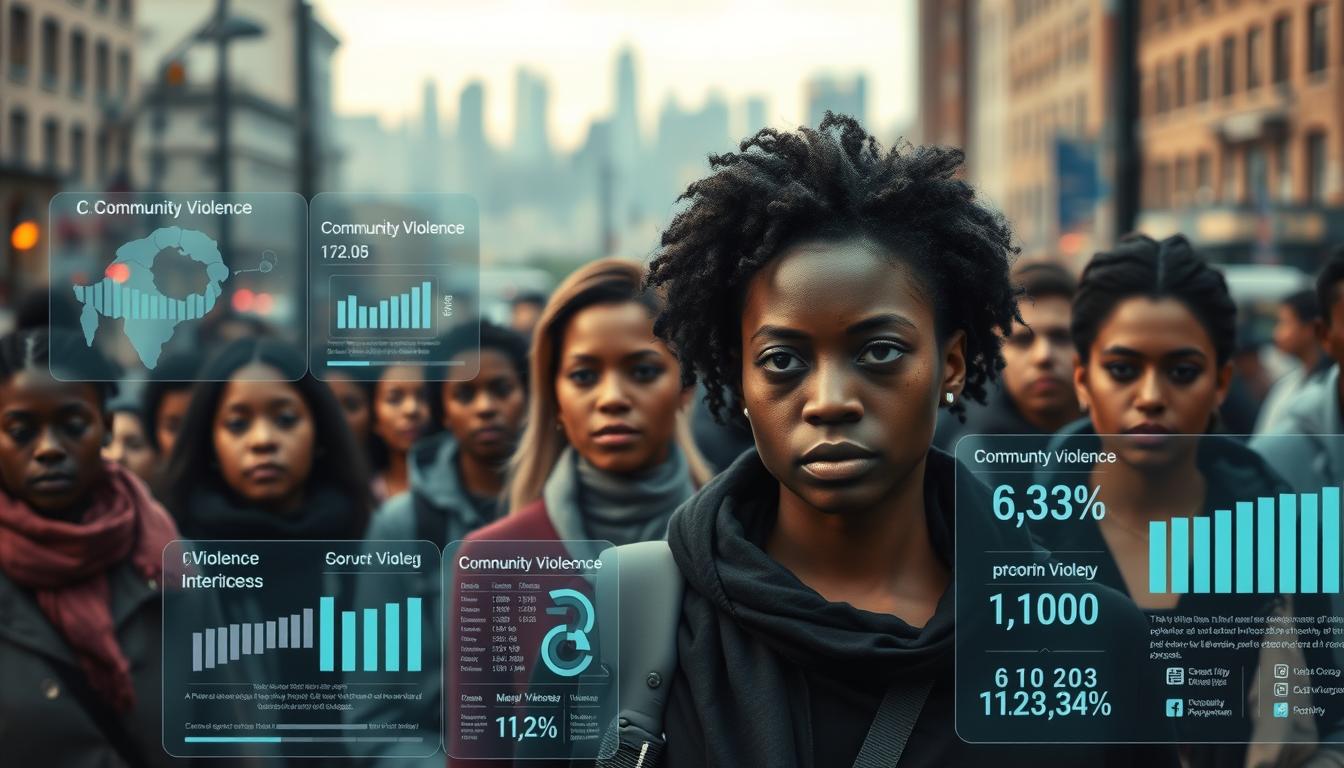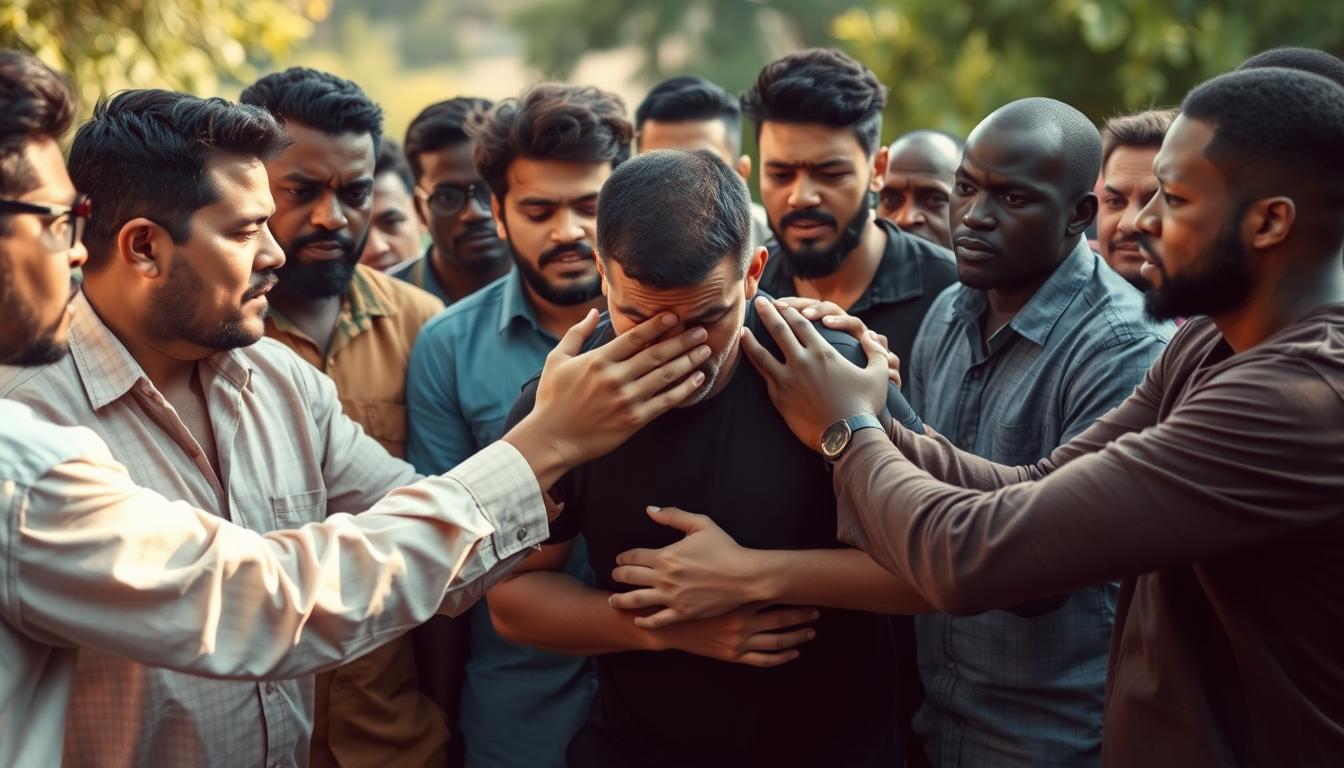Understanding the complex issues surrounding violence in communities of color requires a nuanced approach. It’s essential to consider the multiple identities that individuals hold and how these intersections impact their experiences.
Racial justice is deeply intertwined with the concept of intersectional justice, which acknowledges that individuals have multiple identities that can affect their interactions with societal systems.
By examining the intersections of race, gender, socioeconomic status, and other factors, we can better comprehend the root causes of violence and develop effective strategies to address it.
Understanding the Foundations of Intersectional Justice
To address violence effectively, it’s essential to grasp the foundations of intersectional justice. Intersectional justice is a framework that acknowledges the multiple identities that individuals hold and how these intersecting identities impact their experiences of violence and marginalization.
The Origins and Evolution of Intersectionality
The concept of intersectionality was first introduced by Kimberlé Crenshaw, a pioneering scholar in the field of critical race theory. Crenshaw’s work highlighted the need to move beyond single-issue approaches to social justice.
Kimberlé Crenshaw’s Framework
Crenshaw’s framework emphasizes the importance of considering how different forms of oppression intersect. As Crenshaw noted, “Intersectionality is a lens, not a theory or a heuristic, though it may be used as any of those.”
Beyond Single-Issue Approaches
Single-issue approaches often fail to capture the complexity of individual experiences. Intersectionality encourages a more nuanced understanding by considering multiple factors, including race, gender, and class.
How Multiple Identities Shape Experiences of Violence
Individuals with multiple marginalized identities face unique challenges. For instance, a black woman may experience both racism and sexism, compounding her vulnerability to violence.
Race, Gender, and Class Intersections
- Race and gender intersect to create distinct experiences of violence for women of color.
- Class further complicates these experiences, as socioeconomic status can affect access to resources and support.
Disability and Immigration Status Considerations
Disability and immigration status are additional factors that can exacerbate vulnerability to violence. An intersectional approach considers these factors to provide a comprehensive understanding.
Intersectional Justice: Addressing Violence in Communities of Color
Addressing violence in communities of color requires a deep understanding of the intersecting factors at play. Violence affects these communities in profound ways, perpetuating cycles of trauma and disadvantage.
Current Statistics and Trends in Violence
Recent statistics highlight the alarming rates of violence in communities of color.

Homicide rates, for instance, are disproportionately high among Black and Hispanic populations.
Disproportionate Impact Across Communities
The impact of violence is not uniform across all communities of color. Certain communities face higher rates of violence due to historical and systemic factors.
The Impact of Systemic Inequities on Safety
Systemic inequities play a significant role in shaping the experiences of violence in communities of color.
Housing and Economic Factors
Unstable housing and economic insecurity can exacerbate the risk of violence. Communities with high levels of poverty and residential instability are more likely to experience violent crime.
Policing and Criminal Justice Issues
Issues related to policing and the criminal justice system also contribute to the problem. Racial biases in policing and sentencing can perpetuate mistrust and exacerbate tensions.
Unique Challenges Faced by Different Groups
Different groups within communities of color face unique challenges related to violence.
Women and LGBTQ+ People of Color
Women and LGBTQ+ individuals of color are particularly vulnerable to violence, facing both interpersonal and systemic violence.
Youth and Elders in Communities of Color
Youth and elders in these communities also face distinct challenges, from gang violence and police brutality to isolation and neglect.
Community-Based Approaches to Violence Prevention
Grassroots organizations and community leaders are driving innovative solutions to violence prevention. By understanding the specific needs and challenges of their communities, these groups are able to develop targeted interventions that address the root causes of violence.
Grassroots Organizations Leading the Way
Local organizations are at the forefront of violence prevention efforts, leveraging their deep connections within the community to implement effective programs. Their work includes providing support services, promoting community engagement, and advocating for policy changes.
Success Stories from Across the United States
Communities across the U.S. are witnessing the positive impact of grassroots initiatives. For example, programs focusing on youth mentorship and job training have shown significant reductions in violence.
Restorative Justice Models
Restorative justice offers an alternative to traditional punitive measures, focusing on healing and reparation. This approach involves bringing together victims, offenders, and members of the community to address the harm caused by violence.
Alternatives to Traditional Punishment Systems
By emphasizing restitution and reconciliation, restorative justice models provide a more holistic response to violence, reducing recidivism and promoting community healing.
Building Coalitions Across Communities
Effective violence prevention requires collaboration across different community groups and organizations. By forming coalitions, communities can pool their resources and expertise to develop comprehensive strategies.
Strategies for Effective Collaboration
Successful coalitions rely on clear communication, mutual respect, and a shared vision. By working together, communities can create a safer, more supportive environment for all members.
Moving Forward: Creating Lasting Change
Creating lasting change requires a sustained commitment to social justice and intersectional justice. By understanding the complex experiences of violence in communities of color, we can develop effective strategies to address these issues.
Community-based initiatives, such as grassroots organizations and restorative justice models, have shown promise in preventing violence and promoting healing. These efforts must continue and expand to achieve meaningful results.
By working together across communities and fostering coalitions, we can build a more just and equitable society. The pursuit of intersectional justice is ongoing, and it is crucial that we remain dedicated to this cause to create a safer, more compassionate world for all.




